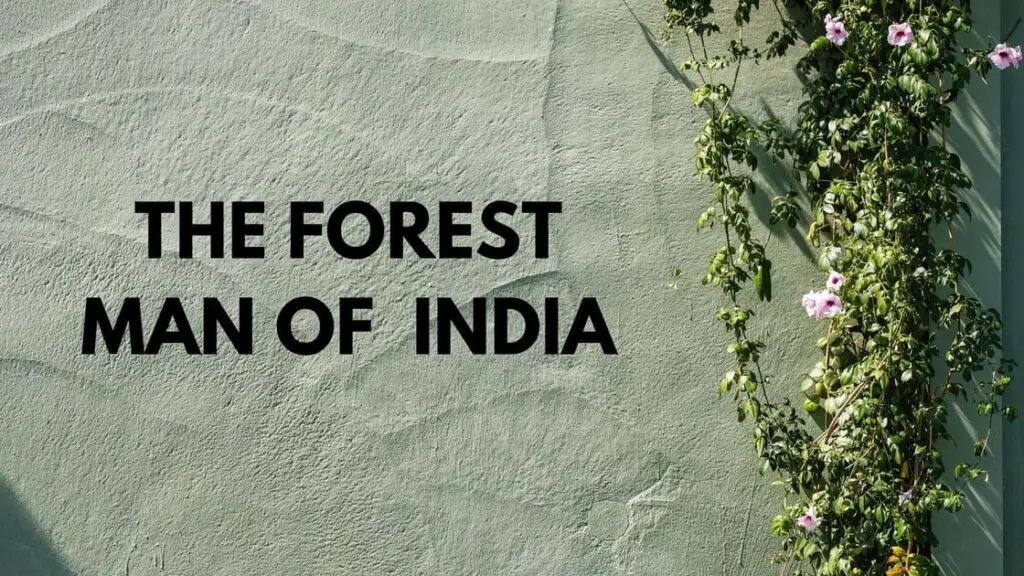The Forest Man of India paved path for youngsters to sow seeds. With the rising awareness of sustainability and the importance of protecting our environment, a lot of activities have been conducted by people on a global scale.
Planting seeds and plants and encouraging others to do so is one of them. The Forest man of India did the same. It is a simple and easy task that consumes very little time, but on a large scale, when these seeds convert into big trees, they protect our environment beyond our expectations.
They can decrease heat waves, droughts, landslides, floods, etc. The story of Forest Man of India is the best example of this.
Who is the Forest Man of India?
As a result of humankind’s never-ending need for resources and agricultural land to feed the world’s expanding population, forests are coming under more and more threat from deforestation. The loss of forests affects not only the amount of trees present but also the entire ecology that depends on them.
As a teenager, Jadav Molai Payeng (Forest Man of India), a native of Majuli, Assam, witnessed this directly. He started planting seeds every day for more than 30 years and created a forest. This forest is named “Molai Forest” after his name. This forest accommodates different wildlife and many medicinal and spices-related plants. All these plants are grown without the use of any fertilizers or pesticides.
The Indian Government has awarded the fourth prestigious award- Padma Shri, to the Forest Man of India for his efforts to protect the environment.
How Did It All Started?
A sixteen-year-old Jadav Payeng began planting a seedling tree every day in 1979. By planting one tree every day, he has now grown a forest the size of fifteen football fields all by himself. But how did it all start?
Majuli, an island in the Brahmaputra River, was home to the native Mishing tribe. Not only that, but it’s the biggest inhabited river island on Earth.
In 1979, Jadav Payang (Forest Man of India), a resident of the island, discovered numerous dead snakes spread throughout the island’s sandy banks, all of which had died from exposure to excessive heat. The floodwaters forced these reptiles to seek safety on the island, where they could not endure on the sandbar. The horrifying scene made him question if people would suffer the same fate.
After that, he began looking for ideas for what he could do. Some older indigenous people advised him to plant bamboo, so he did so along the coast.
This was the period when the island’s experimental forestation drive was started by the Assam State Forest Department’s social forestry branch in an effort to stop soil erosion and flooding. Countless villagers participated in the plantation drive, including Payeng, who remained behind long even though everyone else had left. Payeng continued to play sapling, transforming a section of land that was formerly part of the mainland but had become a river island owing to soil erosion into a healthy forest. This forest is 1390 acres now.
Initially started with a variety of bamboo, he then planted different tree species, such as koroi, moj, himolu, ejar, valcol, and arjun, which eventually grew into a dense forest that is now self-sustaining.
Along with tigers and rhinos, the Molai forest is home to over 100 deer, rabbits, monkeys, various birds, and a vast number of vultures. Every year, a big herd of elephants visits the forest and stays there for a few months.
The government discovered Jadav’s forest in 2008 when a herd of approximately 100 wild elephants wandered into it. They have been annual visitors to the forest ever since. They often spend six months or so living in the jungle. In the forest, the elephants had given birth to ten calves.
It is High Time We Take Inspiration
Many climate changes have been happening globally in the past few years. Droughts, heat waves, floods, etc., are causing all the lives on this planet to suffer. While ocean pollution is causing the death of marine life, far more reasons are causing suffering to the lives on Earth. Planting seeds and sampling can be the best solution for these problems.
Padma Shri award winner and the Forest Man of India Jadav Payeng also says the same. He tries his best to create awareness among youth about the crisis one can get if one neglects the steps to be taken to protect the environment. It’s high time we took inspiration from him and took an oath to plant a seed at least once a week!
Conclusion
One man- the Forest Man of India- had created a forest of 1390 acres by planting seeds or saplings every day for 30 years! This forest is larger than the central park, and he was awarded Padma Shri for his service to the environment. We should get inspiration from him and start sowing seeds for a better ecosystem.




